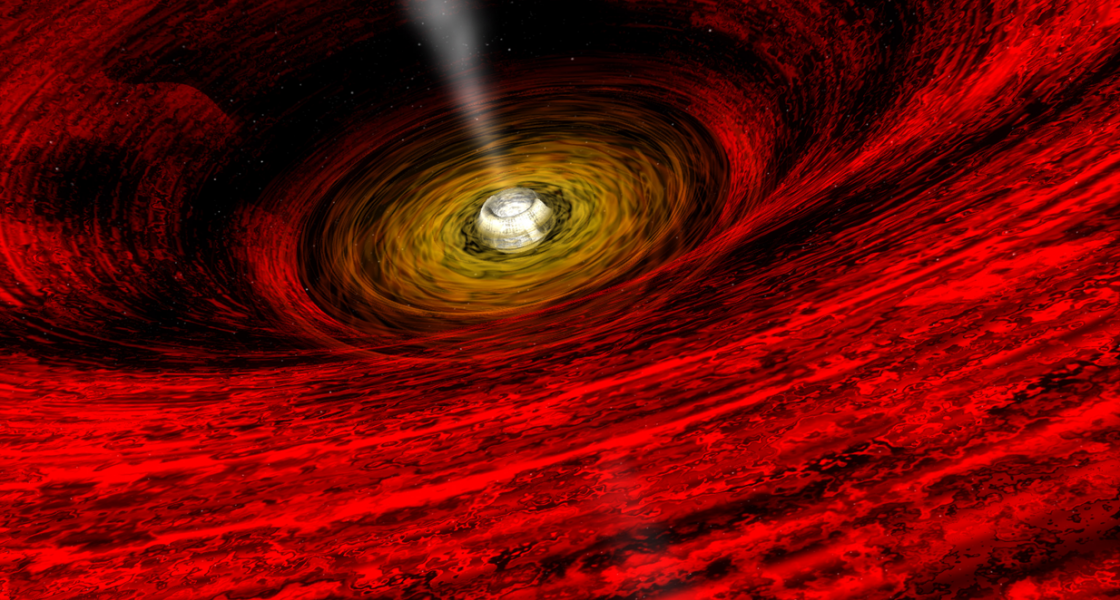Fellow Mitch Begelman and his colleagues came up with the idea of quasistars to explain the origin of the supermassive black holes found at the center of most galaxies. According to Begelman, quasistars formed when massive amounts of gas were funneled into the center of protogalaxies. This prodigious amount of gas collapsed directly into black holes without forming stars. The resulting black holes grew rapidly by sucking in matter from the great envelopes of gas still surrounding them. This process released enough energy to puff up quasistars, which then radiated light (like stars). The quasistars evaporated after about a million years. However, in that amount of time, the “seed” black holes inside of them could only have acquired masses of about a hundred thousand Suns.
However, the black holes at the center of most galaxies today have masses of millions to billions of Suns (Figure 1). Something must have happened after the quasistars disappeared to cause the seed black holes to grow 10 to 100,000 times bigger.
Begelman recently explored a couple of intriguing ideas about what could have caused the black holes to rapidly increase in size. First, he wondered if conditions in nascent galaxies could recreate quasistars, which efficiently grew black holes while they lasted. However, his analysis showed that it would be impossible to come up with the huge reservoir of gas needed to recreate a quasistar.
Begelman next explored brief episodes of “binge eating” by the seed black holes left behind by the quasistars. He discovered that if the seed black holes were not too massive, it would be possible to force-feed them from a relatively small envelope of gas that was regularly replenished when more gas fell into the galactic center. During a period of force-feeding, the black hole could grow very rapidly as the gravity of the entire galaxy forced matter into it.
Before long, however, energy (in the form of jets) would spew out of the black hole and blow away the envelope. With smaller black holes, most of this gas would be trapped by the gravity of the galaxy. The trapped gas would eventually fall back into towards the black hole and cause the envelope to reform. This process would initiate another period of binge eating.
As the black hole got larger, however, it would fling more and more gas away fast enough to escape the galaxy. Even so, as long as some of the far-flung gas fell back in, episodes of force-feeding/binge eating continued. However, once the black hole grew large enough to fling the entire envelope out of the galaxy, it stopped growing.
The day came when the supermassive black hole literally threw away its next meal. Around the same time, any gas remaining inside the galaxy was forming millions, perhaps even billions of stars. As more stars appeared, it became even less likely that sufficient gas would ever reach the center of the galaxy to feed the now truly monstrous black hole.
What’s intriguing about the force-feeding model is that it may help explain an observed correlation between the size of a central supermassive black hole and the size of the galaxy surrounding it. The mass of a central black hole is equal to .1% of the mass of the core galaxy. It is also proportional to the fourth power of the speed of the core stars in the central bulge. The feedback mechanism implicit in the force-feeding model may provide an explanation why the appearance of billions of stars in the galactic core correlates with the cessation of black hole growth. — Julie Phillips




